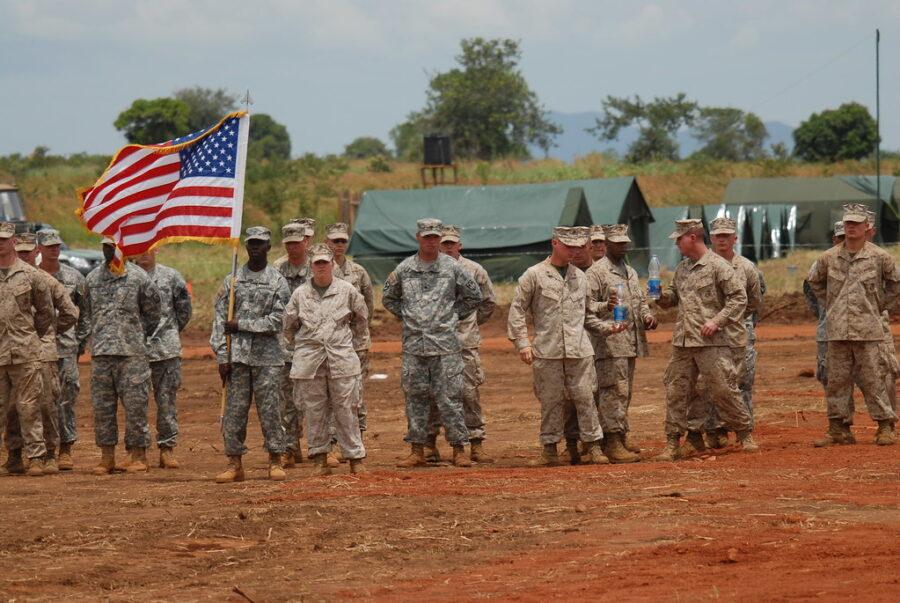
In February, the International Court of Justice (ICJ) ruled that Uganda must pay $325 million in reparations to the Democratic Republic of Congo (DRC) for its role in conflicts in Congo’s resource-rich Ituri province from 1998 to 2003.
The amount includes $225 million to be paid for “loss of life and other damages to persons” that included rape, conscription of child soldiers and the displacement of up to 500,000 people.
The ICJ added another $40 million for damage to property and $60 million for damage to natural resources, including the plundering of gold, diamonds, timber and other goods by Ugandan forces or rebels they supported.
The $325 million sum falls well short of the $11 billion that Congo had demanded.
For true justice to be achieved, Uganda’s foreign backers—including especially the U.S.—should also be held liable for significant reparations payments and be indicted criminally.
Ugandan Invasion and Plunder of the Congo
Uganda first invaded the DRC in 1996 with Rwanda in order to replace the DRC’s ailing leader Joseph Mobutu Sese Seko with Laurent Kabila, a former guerrilla fighter and diamond smuggler who would help Uganda and other foreign powers access the country’s rich mineral wealth.
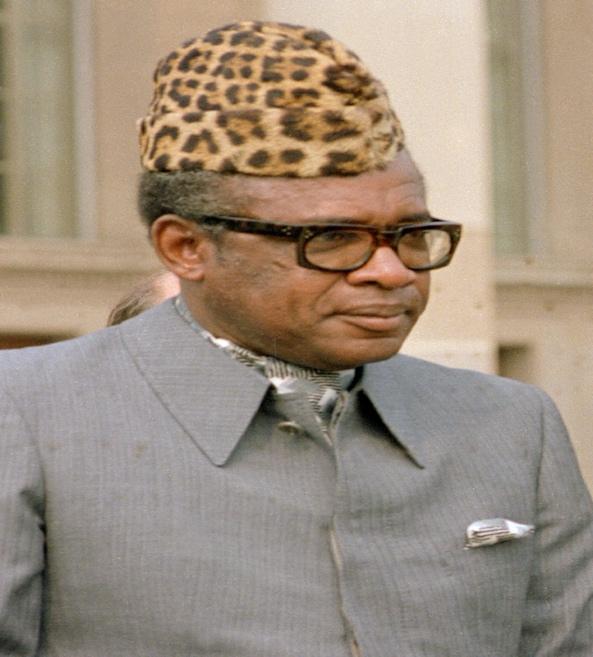
Joseph Mobutu Sese Seko [Source: wikipedia.org] 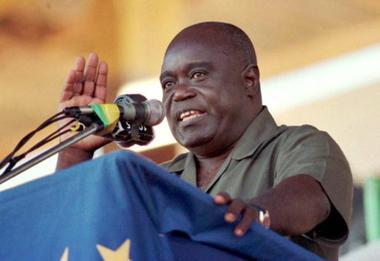
Laurent Kabila [Source: blackpast.org]
In 1997, gold and gold compounds plundered from the DRC became Uganda’s second largest source of export earnings.[1]
In 1998, after Museveni claimed that Kabila was failing to provide security along Uganda’s border, Ugandan troops invaded the DRC again and helped install a new puppet, Hyppolite Kanambe (aka Joseph Kabila).[2]
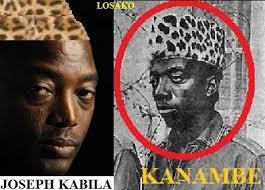
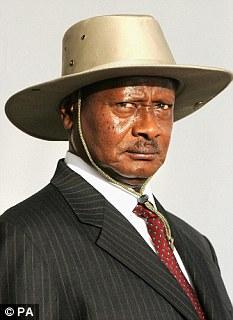
The Wall Street Journal had reported that Kabila’s nationalizations “sent a worrying signal … to foreign companies that are eager to do business in this mineral-rich country.”
Between 1999 and 2003, Uganda and its proxy militias controlled Congo’s Ituri region, home to some of the richest gold and diamond deposits on earth, as well as coltan.
During this period, some 50,000 Iturians were killed and half a million displaced while the Ugandans and their allies “looted property, committed murders, and grabbed land,” in the words of journalist Helen C. Epstein. Villagers were raped, and herded into churches and burned alive.[3]
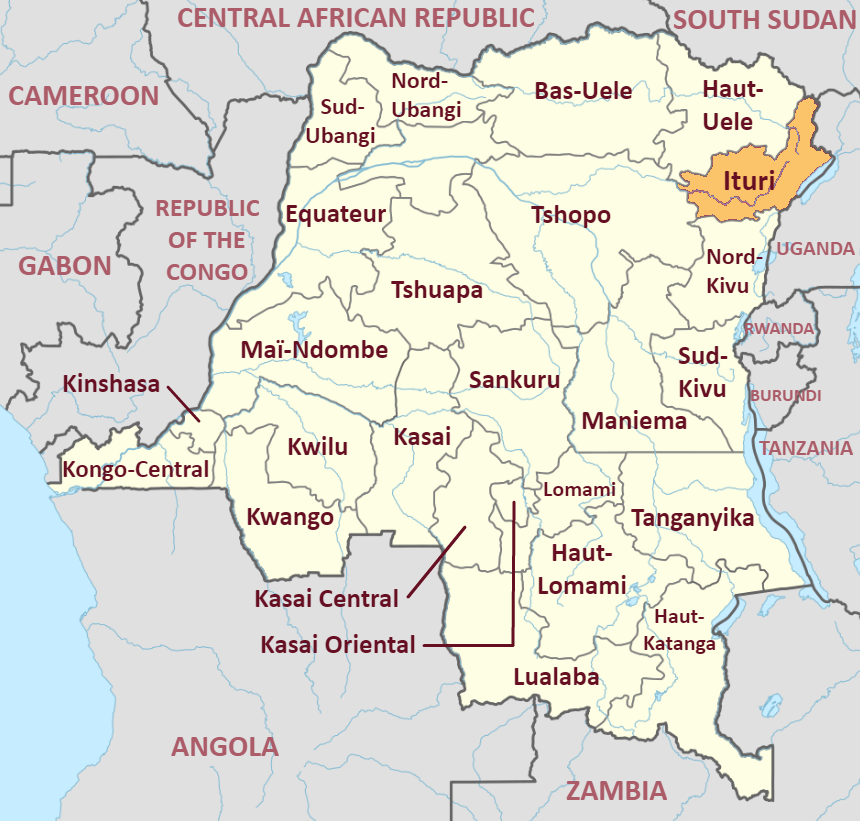
The UN Security Council reported that General James Kazini, the commander of the Ugandan Army, looted timber and conspired with a Ugandan militia leader, Ernest Wamba dia Wamba, to seize 200 tons of coffee beans in the Équateur region.
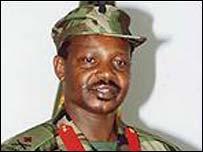
James Kazini [Source: news.bbc.co.uk] 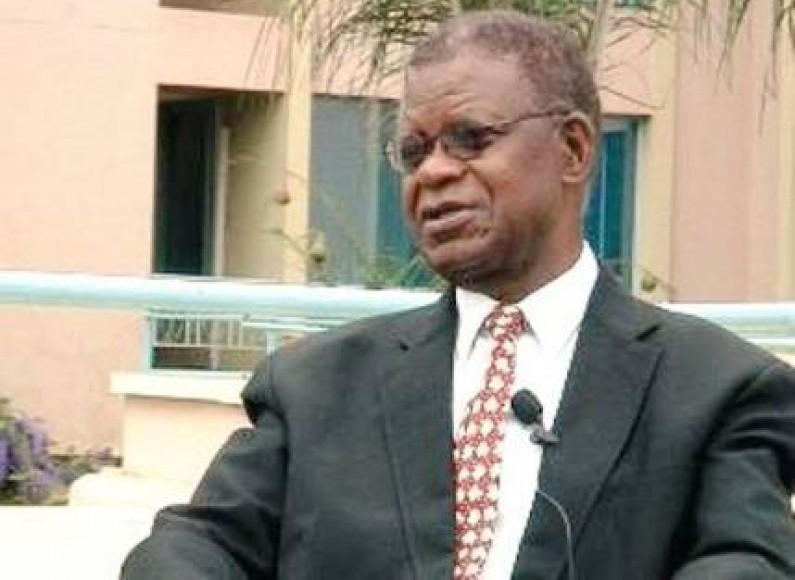
Ernest Wamba dia Wamba [Source: intervention.ng]
President Museveni’s half-brother, Salim Saleh, and his wife, Jovia Akandwanaho, took charge of the exploitation of diamonds while setting up a private air-transport company to ship illicit natural resources back into Uganda.
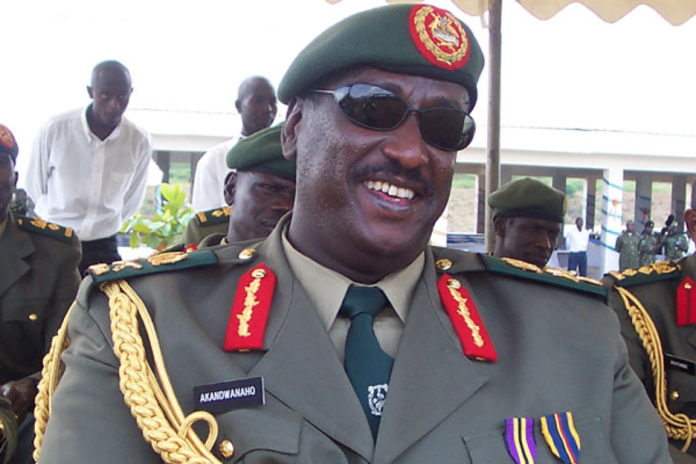
In total, Uganda is estimated to have plundered at least $10 billion in Congo’s mineral wealth.
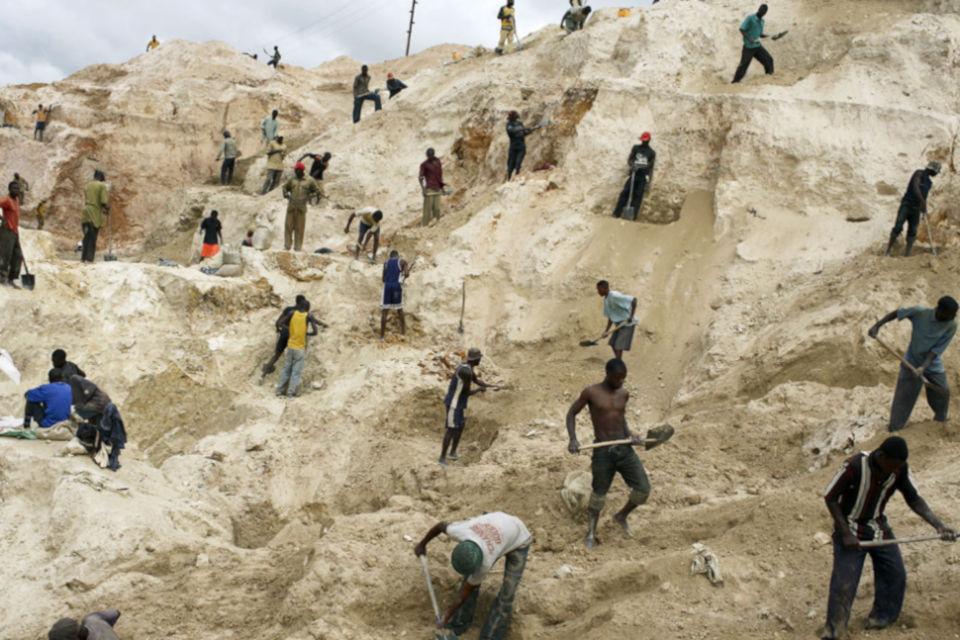
Emma Bonino, European Commissioner for Humanitarian Aid, spoke of “incomprehensible carnage” and accused the invaders (Uganda and Rwanda) of having transformed the entire region into a “slaughterhouse.”[4]
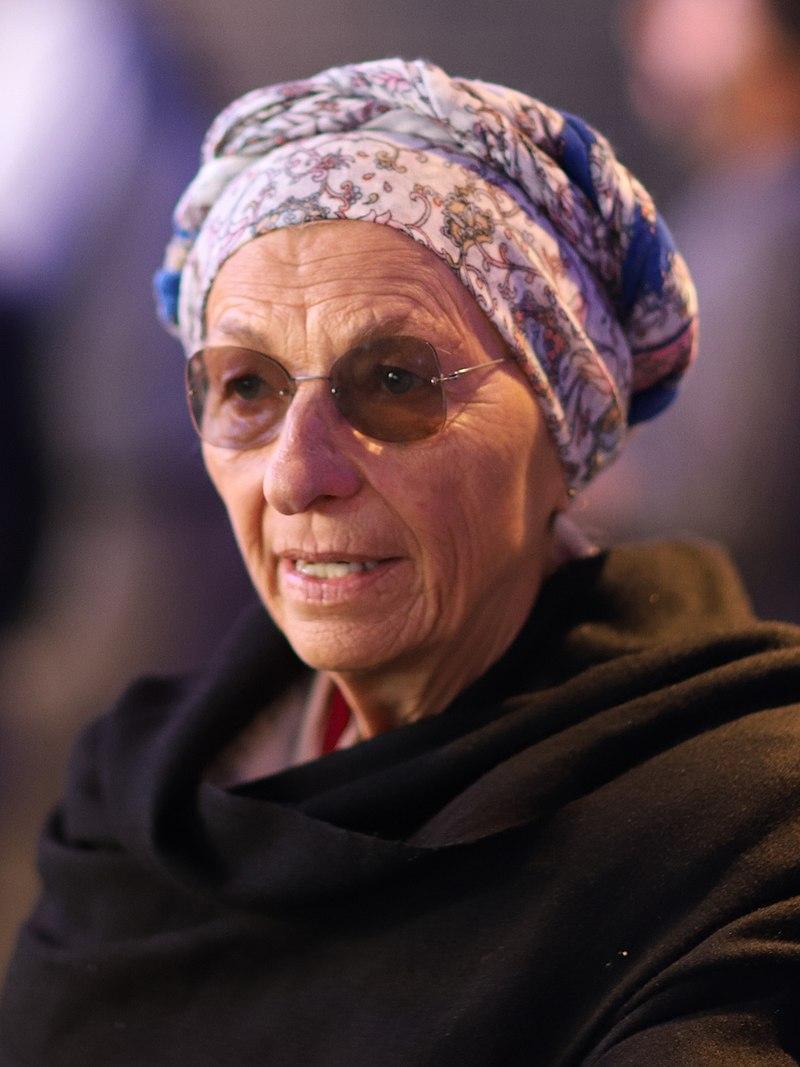
U.S. Complicity in “Africa’s First World War”
From the beginning, the U.S. and Great Britain were key sponsors of the Rwandan-Ugandan invasion of Congo, “Africa’s First World War.”
Ugandan troops received extensive funding through Bill Clinton’s African Crisis Response Initiative (ACRI), a $10-20 million per year initiative inaugurated in 1996.[5]
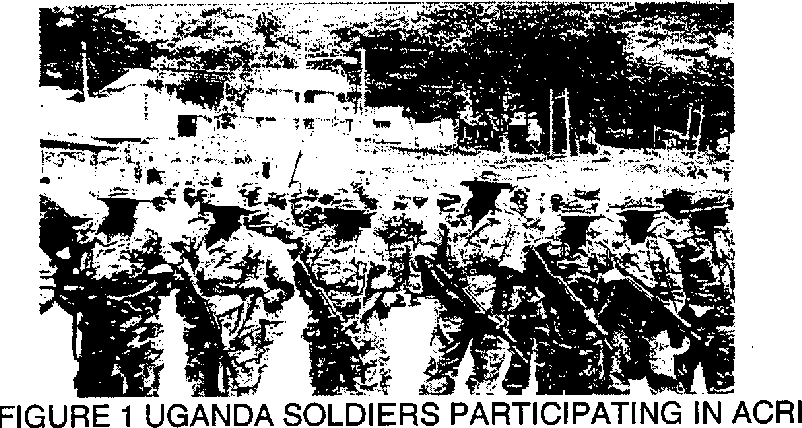
With the approval of the Clinton administration, the Pentagon and CIA provided more than $10 million in arms to Uganda as well as Rwanda, including through a CIA-run airline, Mountain, which helped evacuate wounded soldiers, and installed a command and communications center in Kigali and in the coastal areas of Uganda to help support them.
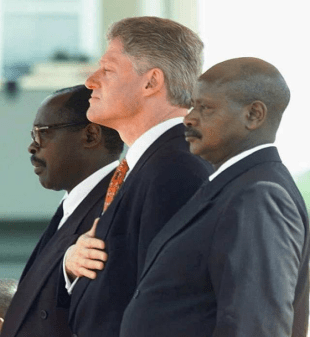
The National Security Agency (NSA) supplied portable encrypted Motorola satellite phones from which Rwandan and Ugandan military commanders could receive advice and intelligence from the U.S. government and CIA-provided satellite imagery of refugee movements, some of it free of charge, through defense contractor Bechtel.[6]
U.S. Special Forces and private contractors, such as Military Professional Resources Inc. (MPRI), provided counterinsurgency training to Rwandan Patriotic Front (RPF) and Ugandan fighters guilty of atrocities against unarmed civilians. A senior U.S. embassy official in Kigali described the program as “killers…training killers.”

The Ugandan fighters were issued American-made uniforms and night-vision goggles. Journalist Wayne Madsen reported on a 1998 visit that he “could hardly avoid encountering uniformed and non-uniformed U.S. military personnel in the… hotels in Kampala and Kigali.”
A few Americans reportedly made incursions into Zaire and some, according to French intelligence sources, participated in massacres of Hutu refugees.

Two Green Berets were reportedly killed. French intelligence claimed that American C-130 gunships machine-gunned refugee camps, though this is difficult to corroborate.[7]
To the Victor Goes the Spoil
As a spoil of victory, Western corporations—such as America Mineral Fields (AMF), headquartered in Hope, Arkansas, Bill Clinton’s hometown, and Barrick Gold, on whose Board sat George H.W. Bush and ex-Canadian Prime Minister Brian Mulroney—received concessions for mining mineral resources worth more than $157 billion.[8]

AMF CEO Jean-Raymond Boulle had been a guest at Clinton’s first White House inauguration; he promoted a venture digging for diamonds in Arkansas in the 1980s when then-Governor Clinton approved Boulle’s drilling in the Arkansas state park.

The CEO of Boulle’s main investor, Sanford Robertson of Robertson Stephens Investment Management Company, gave hundreds of thousands of dollars to Democratic Party causes and hosted fundraisers for Clinton.[9]

Another big beneficiary of the U.S.-Rwandan-Ugandan invasion of Congo was the copper giant Phelps Dodge Corporation, which secured ownership of the cobalt-producing Tenke Fungurume mine with the help of the U.S. embassy.[10]
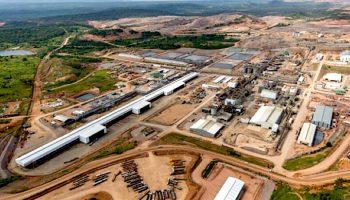
With Friends Like These
Museveni was used as an important proxy to enable the corporate plunder of the Congo. He evolved as a “darling of U.S. diplomats” in the 1990s as a result of his “style of self-reliant government, fiscal discipline and free-market economics,” according to The New York Times.[11]
Between 1998 and 2013, Museveni’s regime received $20.5 billion in U.S. aid. Secretary of State Madeleine Albright called him “a beacon in the Central Africa region.”[12]
Back in 1987, fresh from his triumph over socialist Milton Obote in a bloody six-year bush war, Museveni had been greeted with full honors on Capitol Hill and met with President Ronald Reagan and Vice President George H. W. Bush.
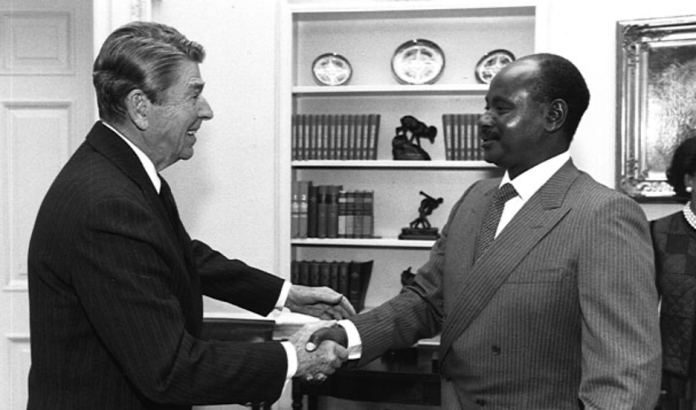
Journalist Helen Epstein wrote that, since the meeting with Reagan, Museveni “has had far more contact with high-level American and British officials than any other living African leader.”
Some company for America’s best and brightest to keep!

-
Helen C. Epstein, Another Fine Mess: America, Uganda and the War on Terror (New York: Columbia Global Reports, 2017), 31, 32. ↑
-
John F. Clark, “Museveni’s Adventure in the Congo War: Uganda’s Vietnam?” In The African Stakes of the Congo War, John F. Clark, ed. (New York: Palgrave Macmillan, 2002), 152; Yaa-Lengi M. Ngemi, ‘Joseph Kabila,’ Identity Thief, Impostor and Rwandan Trojan Horse in Congo (New York: Create Space Independent Publishing Platform, 2017). ↑
-
Epstein, Another Fine Mess, 128. ↑
-
See Wayne Madsen, Jaded Tasks: Brass Plates, Black Ops, & Big Oil (Walterville, OR: Trine Day, 2006); Judi Rever, In Praise of Blood: The Crimes of the Rwandan Patriotic Front (Toronto: Random House, 2018), 47. ↑
-
James Rupert, “U.S. Troops Teach Peacekeeping to Africans,” The Washington Post, September 26, 1997, https://www.washingtonpost.com/archive/politics/1997/09/26/us-troops-teach-peacekeeping-to-africans/dcb12861-66d1-4248-9937-1e2b1c757919/; Paul Omach, “The African Crisis Response Initiative: Domestic Politics and Convergence of National Interests,” African Affairs 99, no. 394 (Jan. 2000): 73-95, https://www.jstor.org/stable/pdf/723548; The White House. Office of the Press Secretary, “Fact Sheet: African Crisis Response Initiative (ACRI),” April 1, 1998, https://clintonwhitehouse4.archives.gov/Africa/19980401-20179.html. ↑
-
J.E. Murphy, U.S. Made (Meadville, PA: Christian Faith Publishing, 2015), 135; Wayne Madsen, Genocide and Covert Operations in Congo, 1993-1999 (Lewiston, NY: Edwin Mellen Press, 1999), 157. Another private firm, Ronco, consisting largely of former U.S. Special Forces, provided explosives, armored vehicles and transport trucks in contravention of a UN arms embargo. Ronco’s vehicles assisted in moving RPF troops from Uganda into Rwanda and later from Rwanda into Zaire. The Americans covered their tracks by insisting that the contract was for the removal of land mines. ↑
-
Filip Reyntjens, The Great African War, Congo and Regional Geopolitics, 1996-2006 (Cambridge: Cambridge University Press, 2009), 67-73; William Hartung and Bridget Moix, Deadly Legacy: U.S. Arms to Africa and the Congo War (New York: World Policy Institute, 1994); Lynne Duke, “U.S. Military Role in Rwanda Greater Than Disclosed,” The Washington Post, August 16, 1997, A1; Madsen, Genocide and Covert Operations in Africa, 1993-1999, 197, 200, 205, 212, 439; Murphy, U.S. Made, 133-135. Madsen reported on a 1998 visit that he “could hardly avoid encountering uniformed and non-uniformed U.S. military personnel in the… hotels in Kampala and Kigali.” An Israeli agent working with U.S. intelligence to assist Kabila’s forces was also reportedly killed. The International Rescue Committee may have helped provide a cover for CIA operations in support of Kabila’s rebels. Kabila himself was advised by Robert Stewart, a Bechtel executive. [NOTE: The sentence beginning “Madsen reported” is already verbatim in the text (p. 8).] ↑
-
Dena Montague and Frida Berrigan “The Business of War in the Democratic Republic of Congo: Who benefits?” Dollars and Sense, July/August 2001, http://www.projectcensored.org/top-stories/articles/19-american-companies-exploit-the-congo/; Keith Harmon Snow and David Barouski, “Behind the Numbers: Untold Suffering in the Congo,” Third World Traveler, http://www.thirdworldtraveler.com/Africa/Congo_BehindNumbers.html; Madsen, Genocide and Covert Operations in Africa 1993-1999, 69-74; Peter Eichstaedt, Consuming the Congo: War and Conflict Minerals in the World’s Deadliest Place (New York: Lawrence Hill Books, 2016). [NOTE: The Snow/Barouski article was first published in Z Magazine in 2006.] ↑
-
“Friends in High Places,” Forbes, August 10, 1998, https://www.forbes.com/global/1998/0810/0109038a.html?sh=20b4a2503aac. ↑
-
Justin Podur, America’s Wars on Democracy in Rwanda and the DR Congo (New York: Palgrave Macmillan, 2020). ↑
-
James C. McKinley, Jr., “Clinton in Africa: The Region; A New Model for Africa; Good Leaders Above All,” The New York Times, March 25, 1998, https://www.nytimes.com/1998/03/25/world/clinton-in-africa-the-region-a-new-model-for-africa-good-leaders-above-all.html ↑
-
Epstein, Another Fine Mess, 134. ↑
CovertAction Magazine is made possible by subscriptions, orders and donations from readers like you.
Blow the Whistle on U.S. Imperialism
Click the whistle and donate
When you donate to CovertAction Magazine, you are supporting investigative journalism. Your contributions go directly to supporting the development, production, editing, and dissemination of the Magazine.
CovertAction Magazine does not receive corporate or government sponsorship. Yet, we hold a steadfast commitment to providing compensation for writers, editorial and technical support. Your support helps facilitate this compensation as well as increase the caliber of this work.
Please make a donation by clicking on the donate logo above and enter the amount and your credit or debit card information.
CovertAction Institute, Inc. (CAI) is a 501(c)(3) non-profit organization and your gift is tax-deductible for federal income purposes. CAI’s tax-exempt ID number is 87-2461683.
We sincerely thank you for your support.
Disclaimer: The contents of this article are the sole responsibility of the author(s). CovertAction Institute, Inc. (CAI), including its Board of Directors (BD), Editorial Board (EB), Advisory Board (AB), staff, volunteers and its projects (including CovertAction Magazine) are not responsible for any inaccurate or incorrect statement in this article. This article also does not necessarily represent the views the BD, the EB, the AB, staff, volunteers, or any members of its projects.
Differing viewpoints: CAM publishes articles with differing viewpoints in an effort to nurture vibrant debate and thoughtful critical analysis. Feel free to comment on the articles in the comment section and/or send your letters to the Editors, which we will publish in the Letters column.
Copyrighted Material: This web site may contain copyrighted material the use of which has not always been specifically authorized by the copyright owner. As a not-for-profit charitable organization incorporated in the State of New York, we are making such material available in an effort to advance the understanding of humanity’s problems and hopefully to help find solutions for those problems. We believe this constitutes a ‘fair use’ of any such copyrighted material as provided for in section 107 of the US Copyright Law. You can read more about ‘fair use’ and US Copyright Law at the Legal Information Institute of Cornell Law School.
Republishing: CovertAction Magazine (CAM) grants permission to cross-post CAM articles on not-for-profit community internet sites as long as the source is acknowledged together with a hyperlink to the original CovertAction Magazine article. Also, kindly let us know at info@CovertActionMagazine.com. For publication of CAM articles in print or other forms including commercial internet sites, contact: info@CovertActionMagazine.com.
By using this site, you agree to these terms above.
About the Author

Jeremy Kuzmarov holds a Ph.D. in American history from Brandeis University and has taught at numerous colleges across the United States. He is regularly sought out as an expert on U.S. history and politics for radio and TV programs and co-hosts a radio show on New York Public Radio and on Progressive Radio News Network called “Uncontrolled Opposition.”
He is Managing Editor of CovertAction Magazine and is the author of six books on U.S. foreign policy, including Obama’s Unending Wars (Clarity Press, 2019), The Russians Are Coming, Again, with John Marciano (Monthly Review Press, 2018), Warmonger. How Clinton’s Malign Foreign Policy Launched the U.S. Trajectory From Bush II to Biden (Clarity Press, 2023); and with Dan Kovalik, Syria: Anatomy of Regime Change (Baraka Books, 2025).
Besides these books, Kuzmarov has published hundreds of articles and contributed to numerous edited volumes, including one in the prestigious Oxford History of Counterinsurgency .
He can be reached at jkuzmarov2@gmail.com and found on substack here.


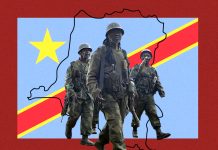
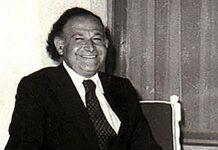
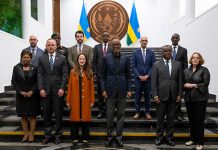
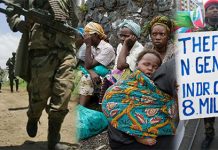
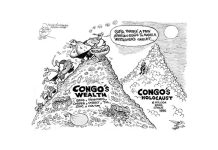
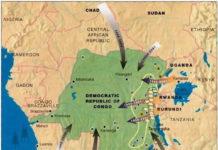

[…] In 1997, gold and gold compounds plundered from the DRC became Uganda’s second largest source of export earnings.[1] […]
Great
Sad
[…] ICC Ruled that Uganda Must Pay $325M in Reparations to the Congo — But What About U.S. and UK? by … […]
A great damning article about the kind of murderous plunder that the mainstream media covers up every day. Africa so sadly continues to be the victim of outrageously camouflaged Western imperialism.
But hey there’s nothing like black humour, – if indeed an ultimate Freudian slip!- out of the mouth of the free world’s war criminals. George H. W. Bush was shown on NZ tv today confusing himself with Putin, and the invasion of Ukraine with Bush’s own invasion of Iraq. Touche!